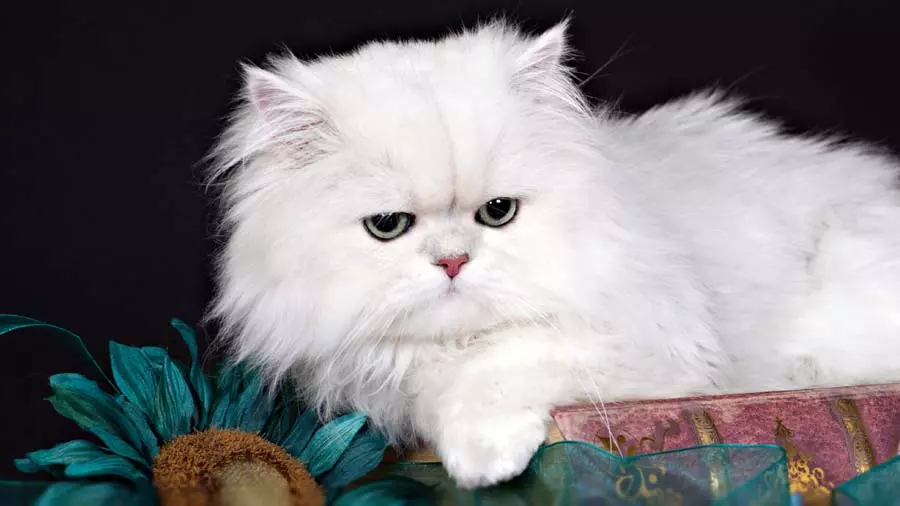
Introduction
In the vast world of pet cats, the Persian cat shines like a brilliant pearl, exuding unique and charming allure. Originating from Persia (modern-day Iran) in the 16th century, this ancient long-haired domestic cat breed holds an extremely important position in the feline world.
Key Features
- Round head, short nose, and large eyes
- Stocky body with long, dense, soft fur
- Gentle and friendly temperament
- Ranked as the 5th most popular cat breed worldwide in 2022
Health Considerations
- Prone to genetic diseases (40-50% risk of polycystic kidney disease)
- Susceptible to brachycephalic airway syndrome
- Requires regular grooming due to long fur
- Higher maintenance requirements than average cats
Historical Journey
16th Century Origins
Persian cats trace their roots to Persia (modern-day Iran) and surrounding regions. Archaeological evidence suggests their ancestors may have roamed ancient Persian streets, becoming companions to locals.
1620: Introduction to Europe
Italian traveler Pietro della Valle introduced Persian cats to Italy, sparking immediate fascination among nobility. Their long fur and elegant demeanor made them status symbols in European high society.
19th Century: Standardization
Selective breeding in Britain refined their features – rounder heads, smaller ears, shorter noses, and stockier bodies. Harrison Weir established the first breed standards, making Persian cats more uniform.
20th Century: Global Popularity
Recognized by the Cat Fanciers’ Association (CFA) in 1906, Persian cats spread worldwide. Their appearance in art, films (like “Cats & Dogs”), and even Pokémon (“Persian” as Meowth’s evolution) cemented their cultural status.
Distinctive Characteristics
Physical Features
Head & Face
Round head with full cheeks, short broad nose, and large round eyes (copper, blue, or green). Wide-set eyes create a sweet expression.
Body
Cobby body (35-43cm long, 3.1-7kg) with short, thick legs. Males are generally larger than females.
Coat
Long, thick, silky fur with a dense undercoat. Requires daily grooming to prevent matting.
Color Varieties
Over 80 color combinations recognized, including solids, bi-colors, tabbies, and colorpoints.
Personality Traits
Gentle
Affectionate and sweet-natured, forming strong bonds with owners
Calm
Prefers serene environments, sleeps 12-16 hours daily
Social
Gets along with other pets and family members
Care Guide
Grooming
- Daily brushing with pin brush & comb
- Bathe every 2-3 weeks with cat shampoo
- Regular eye cleaning to prevent staining
Nutrition
- High-protein diet (35-40% protein)
- Moderate fat (15-20%) for coat health
- Plenty of fresh water to prevent UTIs
Environment
- Quiet space with cozy resting spots
- Maintain 20-26°C temperature
- Safe indoor environment (no toxic plants)
Health Considerations
Common Health Issues
- Polycystic Kidney Disease (PKD) – 40-50% prevalence
- Brachycephalic Airway Syndrome
- Progressive Retinal Atrophy
- Hypertrophic Cardiomyopathy
- Seborrhea (skin condition)
Preventive Care
- Annual veterinary check-ups
- Genetic testing for PKD
- Dental care to prevent periodontal disease
- Weight management to avoid obesity
- Regular grooming to prevent hairballs
Breed Varieties
Traditional (Doll Face)
Original Persian features with less extreme facial structure
- Longer nose for better breathing
- Calm, affectionate personality
- Same luxurious coat as show Persians
Exotic Shorthair
“Lazy man’s Persian” with short, plush coat
- Persian personality in a low-maintenance package
- Developed from Persian/American Shorthair crosses
- Slightly more playful than traditional Persians
Himalayan
Colorpoint Persian with Siamese influence
- Distinctive “points” on face, ears, legs and tail
- Blue eyes from Siamese ancestry
- Same grooming needs as other Persians
Is a Persian Cat Right for You?
Persian cats make wonderful companions for those who appreciate their serene nature and are committed to their grooming needs. They thrive in calm households where they can receive plenty of affection without too much hustle and bustle.
Ideal For
- People who enjoy quiet companionship
- Those with time for daily grooming
- Families with gentle children
- Indoor living situations
Not Ideal For
- Those wanting a low-maintenance pet
- Very active households
- Owners who travel frequently
- People with allergies to cat hair